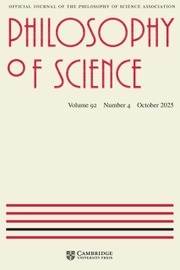No CrossRef data available.
Article contents
Review of Nina Emery’s Naturalism Beyond the Limits of Science - Nina Emery, Naturalism Beyond the Limits of Science: How Scientific Methodology Can and Should Shape Philosophical Theorizing. Oxford: Oxford University Press (2023).
Review products
Nina Emery, Naturalism Beyond the Limits of Science: How Scientific Methodology Can and Should Shape Philosophical Theorizing. Oxford: Oxford University Press (2023).
Published online by Cambridge University Press: 31 March 2025
Abstract
An abstract is not available for this content so a preview has been provided. Please use the Get access link above for information on how to access this content.
Information
- Type
- Book Review
- Information
- Copyright
- © The Author(s), 2025. Published by Cambridge University Press on behalf of the Philosophy of Science Association
A correction has been issued for this article:
Linked content
Please note a has been issued for this article.

